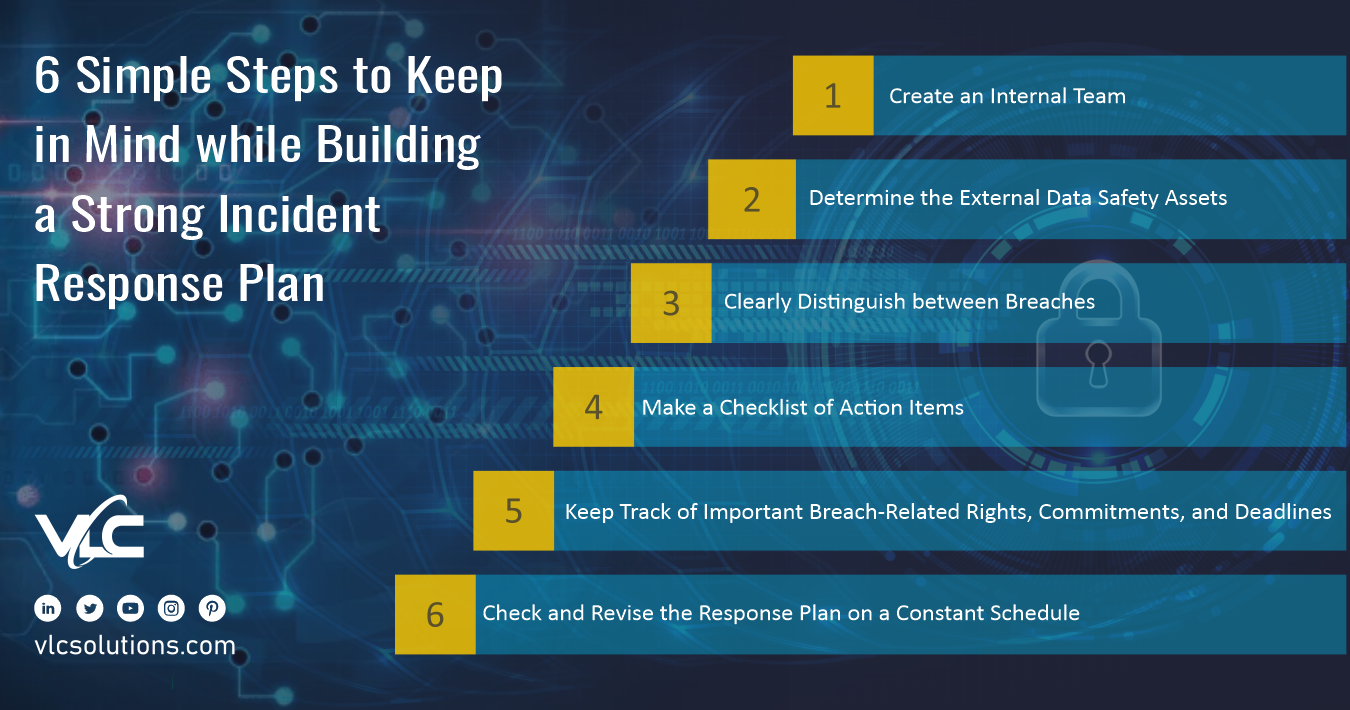6 Simple Steps to Keep in Mind while Building a Strong Incident Response Plan
There is growing recognition that all businesses, large and small to medium-sized, require a robust incident response plan. Irrespective of the company size, any organization is not fully immune to cyber threats.
Therefore, a well-defined strategy of action implemented directly after a security breach is critical for limiting risk in the form of incident costs and reputational damage.
An incident response plan that has been properly planned and documented explains your organization’s reaction to security breaches, cyber-attacks, and security risks. In order to minimize further losses,
cut down recovery time, and mitigate cybersecurity risk, an incident response strategic plan that contains detailed guidance for specific attack situations has become a critical need.
The Importance of Incident Response Planning:
Sometimes, even minor cybersecurity incidents, such as malware incursions, can escalate into larger issues, resulting in data infringements, data loss, and business interruption. Therefore, incident response
planning becomes crucial since it identifies how and where to decrease the duration and severity of security events, detects interested parties, simplifies digital forensics, enhances the recovery period,
and minimizes bad publicity and customer churn.
Further, it enables organizations to build best practices for crisis response, including alerting customers, vendors, law enforcement, employees, and trading partners like banks, etc. Incident management
is crucial for avoiding future such incidents and for running a business that handles confidential material like Personally Identifiable Information (PII), Protected Health Information (PHI), Copyrights,
Sensitive, Controlled Unclassified Information (CUI), or data on biometrics.
Apart from the breach recovery cost, primary issues include business consistency, customer retention, and quality control. Although it is impossible to eliminate all security risks,
an efficient incident response plan can help alleviate the most severe risks.
Building an Incident Response Plan:
An effective incident response plan should direct staff of the company at all levels to handle a prospective data breach in such a manner that encourages quick and insightful response efforts. Response plans must be viewed as an integral component of all businesses.
- Create an Internal Team:
Businesses with considerable sensitive data should create and implement a breach appraisal and response team to assist the organization’s actions after a major sensitive information breach rather than referring breach questions directly to the person in charge. - Determine the External Data Safety Assets:
Breach progressions can spiral out of control even before the company identifies and have the relevant security experts to assist in meeting breach-related duties and minimizing liability. A robust incident response plan will determine each external resource and offer complete contact details. - Clearly Distinguish between Breaches:
The response action plan should be adaptable enough to create a suitable and efficient procedure for different kinds of breaches. Slight violations, for instance, can be managed just by the responsible manager, while others may inevitably mean discussion with the whole response team and throughout other departments. - Make a Checklist of Action Items:
Bigger companies’ incident response plans should consist of a checklist of prioritized action items that must be done as soon as the firm realizes that there is a potential data violation. Notably, businesses should resist making public announcements about security-breached computer systems until investigators ascertain that an unauthorized intrusion did occur. A false alert can cause significant and unwarranted damage to the company’s image. - Keep Track of Important Breach-Related Rights, Commitments, and Deadlines:
Aside from identifying the company’s key legal responsibilities under relevant state or federal laws and deadlines for reporting or responding to potential breaches, the response plan should also keep track of all data security-related deadlines. Timelines and commitments should be monitored, so they are not ignored or missed by mistake. - Check and Revise the Response Plan on a Constant Schedule:
An incident response plan must be evaluated and updated on an ongoing basis – at least once a year and when necessary. The incident response plan should be updated to match the current information at all times, and service provider plans, in specific, should be kept up to date so that external consultants are accessible when required.
To summarize, mismanaging the data breach due to insufficient preparation and an inability to conduct near-term planning can exacerbate an already dire situation. Therefore every business must have a clear vision to create a good incident response plan. Talk to VLC Solutions today, to help you envision a powerful incident response plan for your organizational defense.
